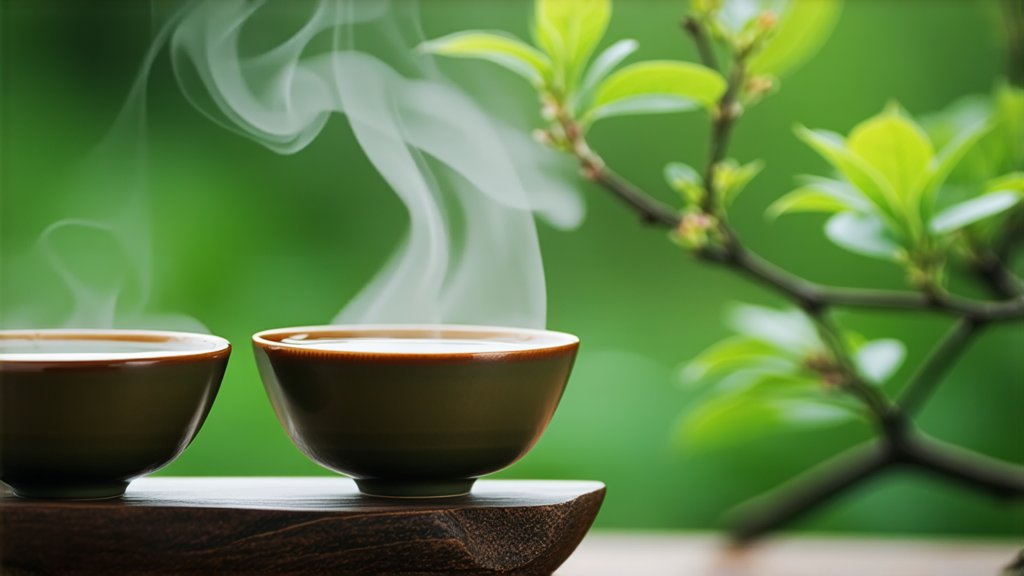
In the vast and diverse world of tea, few varieties captivate the senses and mind as profoundly as Tieguanyin, one of China's most revered oolong teas. This exquisite beverage is not merely a drink; it is an experience that embodies centuries of tradition, meticulous craftsmanship, and a deep connection to nature. In this article, we embark on a journey through the history, varieties, production processes, and the art of appreciating Tieguanyin, offering an intimate glimpse into the heart of Chinese tea culture.
A Brief History of Tieguanyin
Tieguanyin, often referred to as the "Iron Goddess of Mercy," traces its origins back to the Ming Dynasty (1368-1644) in Anxi County, Fujian Province, China. Its name is derived from the local Guanyin Temple, where according to legend, a poor farmer discovered the unique tea variety. Over time, Tieguanyin gained immense popularity for its exceptional flavor profile and health benefits, eventually becoming a symbol of hospitality and a cherished part of Chinese heritage.
Varieties and Characteristics
Tieguanyin encompasses several sub-varieties, each with distinct characteristics that cater to different palates. The two primary types are Qing Xiang (Green Fragrance) and Zhu Xiang (Bamboo Fragrance), which are further divided into numerous regional and stylistic variations. Qing Xiang Tieguanyin is known for its floral and fruity aromas, reminiscent of orchids and green apples, while Zhu Xiang boasts a more earthy, roasted scent akin to bamboo shoots and nuts. These differences arise due to variations in cultivation practices, terroir, and processing techniques.
The Art of Crafting Tieguanyin
The creation of Tieguanyin is an intricate process that requires precision, skill, and a deep understanding of the tea plant. It begins with the careful selection of high-quality tea leaves, typically harvested between April and October when the climate is optimal for growth. The leaves are then subjected to a series of meticulous steps: sun wilting, indoor withering, tossing or shaking (to bruise the edges of the leaves), fixation (to halt oxidation), rolling, oxidation (partial for oolong), and finally, drying. This multi-step process not only preserves the tea's natural flavors but also enhances its complex aroma and taste.
One of the distinguishing features of Tieguanyin production is the "green within, red outside" characteristic, referring to the partial oxidation that gives oolong tea its unique color and flavor profile. The level of oxidation can vary significantly between different batches of resulting in a spectrum of flavors from light and floral to dark and roasted.
Appreciating Tieguanyin: A Tea Ceremony
To truly appreciate Tieguanyin, one must engage in a traditional tea ceremony, which is both a ritual and an art form. The ceremony begins with the preparation of the tea utensils, including a Yixing clay teapot, cups, and a tea tray. Warming the pot and cups with hot water is crucial to maintain the tea's optimal brewing temperature.
Next, the tea leaves are measured precisely, typically around 5-7 grams per 150ml of water, ensuring a balanced infusion. The leaves are rinsed briefly with boiling water to awaken their flavors before discarding this initial wash. Subsequent infusions involve steeping the leaves in hot water (around 95°C) for varying times, starting from 15 seconds for the first brew and gradually increasing with each subsequent infusion. Each brew reveals new dimensions of flavor, aroma, and mouthfeel, demonstrating Tieguanyin's complexity and depth.
The act of pouring the tea is performed with grace and precision, allowing the liquid to flow smoothly into the cups without splashing. As you lift your cup, take a moment to appreciate the tea's color—a clear, golden hue that hints at the treasures within. Inhale deeply to capture the tea's aroma before taking a gentle sip, letting it roll over your tongue and savoring its nuances. The experience is meditative, encouraging mindfulness and appreciation for the present moment.
Health Benefits and Cultural Significance
Beyond its sensory pleasures, Tieguanyin is celebrated for its potential health benefits. Rich in antioxidants, polyphenols, vitamins, and minerals, it is believed to boost metabolism, aid digestion, promote relaxation, and support overall well-being. Some studies suggest that regular consumption may contribute to weight management, improved cardiovascular health, and enhanced cognitive function.
Culturally, Tieguanyin holds a special place in Chinese society, symbolizing friendship, respect, and hospitality. It is customary to offer guests a cup of Tieguanyin as a gesture of warmth and welcome, fostering connections and shared experiences. Tea houses and tea ceremonies serve as gathering spaces where people come together to exchange ideas, deepen relationships, and find solace in the simple act of drinking tea.
Conclusion
Tieguanyin stands as a testament to the artistry and dedication inherent in Chinese tea culture. From its storied past to its meticulous production process and the meditative practice of its tea ceremony, every aspect of Tieguanyin invites us to slow down, savor life's subtleties, and connect with nature and tradition. As we raise our cups to this iron goddess, her fragrant whispers remind us that true luxury lies not in extravagance but in the profound simplicity and depth of a well-crafted cup of tea.